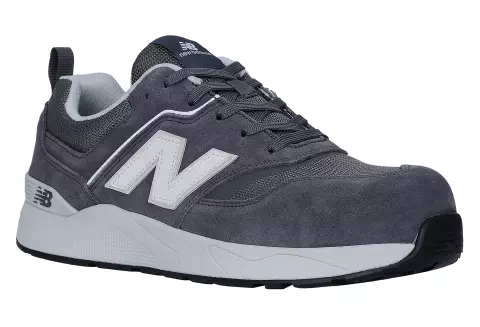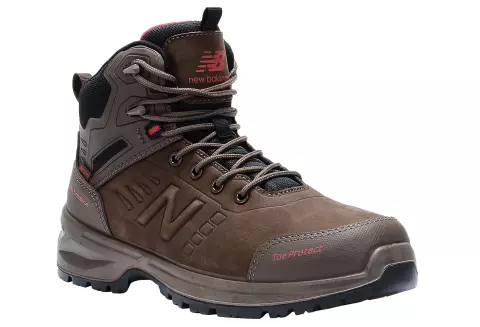
Aggregate Planning: Tips & Strategies
Introduction: Strategic production planning is essential for businesses aiming to meet demand efficiently while maximising profits. Producing too few items...

Get 20€ off on your first order!
Procurement cost reduction solutions optimise an organization’s financial resources, enabling it to produce high-quality products and services and increase profit margins. Centralising purchasing, strategic sourcing, category management, TCO analysis, supplier relationship management, and contemporary technology can assuage procurement pain points, improve efficiency, and generate value.
Key Takeaways:
A procurement cost reduction strategy is an operational technique or set of initiatives designed to reduce expenditure. Using current technology to streamline transactional workflows, negotiate service or product costs, make strategic supplier decisions, benchmark supplier performance, centralise purchasing, standardise purchasing across departments, and more are just a few.
Today’s market requires procurement cost reduction techniques to help businesses of all sizes save costs, boost efficiency, and maximise earnings. Cost-cutting tactics can help a corporation save money by using group purchasing power or using data analysis tools to predict demand and get greater value for capital.

/package

/package

/package

/package

/package

/package

/package

/package

/package

/package

/package

/piece

/package

/package

/package

/package

/pair

/package

/pair

/package

/package

/package

/package

/piece

/package

/package

/pair

/pair
Cost reduction can boost profit margins while maintaining high-quality products and services. Any successful organisation should examine how procurement expenses are calculated and find ways to cut them.
To boost finances, companies seek procurement cost reductions. Business performance typically depends on procurement, as securing ideal pricing and terms often permits other operations to run smoothly and maximise earnings.
When it comes to corporate success, procurement cost reduction can make all the difference. Cost reduction measures can lower total expenditures, which can add up rapidly with large and minor purchases. Never underestimate expense reduction strategies—they pay off big time.
Strategic sourcing reduces procurement costs and boosts corporate efficiency. A cost-based plan to source goods and services is created and implemented using this method. Strategic sourcing helps organisations find cost-saving possibilities, boost their competitiveness, optimise resources across all spend categories, and lower supply and material prices.
Category management helps control procurement expenses. This method categorises all procurement expenses by product or service. One team in an organisation can set strategies for each category. This helps teams to acquire better pricing through supplier consolidation, save money through market intelligence data, and improve quality assurance through strict contract negotiations for their organisation.
Companies trying to save procurement expenses must also consider total cost of ownership. TCO analysis helps firms understand how actions affect individual components over time and disclose aspects not reflected in the direct price paid for goods or services.
TCO analysis in business strategy can reduce operational costs by shortening process cycles, identifying cost optimisation opportunities in consuming departments, and capturing lower supplier purchase prices over time to achieve economies of scale in buying decisions.
Organisations must know their budgets to handle spend-related procurement. They need a fetching tool like spend analysis or cost transparency initiatives to objectively map out their spending categories by mapping prior financial expenses. This technique helps firms plan ahead and detect risks related to looming expenditure cycles or needless expenditures. Businesses can cut needless spending with this technique, resulting in significant cost savings.
E-procurement is one of the best procurement cost-cutting solutions. Electronic systems can dramatically cut processing costs by reducing time and resources needed to buy goods, services, and supplies. E-procurement eliminates human errors in requisition and processing, saving organisations money.
E-procurement platforms also provide instant pricing comparisons amongst vendors to boost negotiation leverage and lower procurement expenses.
Additionally, supply chain management software can optimise procurement cost savings. A good supply chain system streamlines operations and provides powerful forecasting tools to predict demand and material needs while closely following customer orders to efficiently procure materials in advance with accurate quantities at efficient prices across a company’s supply chain network.
Companies can maximise visibility across contracts, payment cycles, and suppliers with an integrated supply chain platform, improving decision-making and saving money on procurement while increasing efficiency.
Using robotic process automation (RPA), which automates tedious tasks like identity verification and quotation management, procurement costs are being reduced by automation and artificial intelligence.
By forecasting future buying habits, artificial intelligence helps firms get the best pricing from their suppliers and save time shopping for bulk or seasonal bargains only when needed.
Procurement cost reduction solutions require supplier selection and evaluation to maximise value and efficiency. Organisations should have robust systems for identifying, vetting, and choosing suppliers that can meet operational goals with quality products or services at the best price and on schedule.
Before choosing a supplier, evaluate their financial and environmental sustainability. By thoroughly investigating and assessing possible suppliers, organisations may choose the ideal partner for their operations and maximise sourcing value.
Organisations must acquire excellent negotiation abilities to maximise savings without compromising quality in procurement cost reduction methods. Companies should study market trends, industry pricing, ways to mitigate risks associated with specific parties, merit-based redistribution of shared costs among stakeholders, win-win contract terms, and long-term relationships that reduce risk exposure.
To sustain an efficient procurement cost reduction plan, firms need an organised contract management procedure to assure consistent and reliable performance against negotiated agreements over time. This technique involves segmenting complex agreements and generating standard measures to monitor execution accuracy based on contractual promises.
Before negotiating renewal terms or entering new supplier relationships after current contracts expire, appropriate systems must be set up to track contract fulfilment data throughout its life cycle to ensure liabilities are effectively addressed.
Monitoring and enhancing current suppliers’ performance helps find cost, quality, delivery, and service improvements. Companies can negotiate better rates or find suppliers with additional capacity and capability.
Thus, savings often result from cost reduction and increased value from more efficient systems and processes. Companies can save money and improve efficiency by proactively analysing and managing supplier performance.
Process optimisation helps firms reduce procurement costs and increase productivity. By optimising purchase and delivery cycles, firms can cut costs and waste. They should analyse supplier procedures and items to find the best supply chain process. Bureaucracy reduction reduces unnecessary stages and maximises each organization’s purchasing power.
Less waste is another benefit of efficient purchasing methods. It is possible to reduce processing efforts and cycle times across departments and promote sustainability by optimising supplier price contracts, reassessing inventory levels, tracking deliveries, and finding alternative sourcing alternatives. Organisations and their stakeholders can save money by investigating and eliminating unnecessary expenditures and then optimising the remaining ones.
Successful procurement cost reduction requires strategic inventory management. Internal supply chain performance evaluations can reveal disparities between activities and outputs, which must be optimised or collaboratively decided.
Understanding holding, ordering, and shipping costs helps organisational leaders make informed decisions about how to maximise supply chain efficiency and effectiveness. By effectively managing inventory, organisations can see how cost reduction measures affect operational value and efficiency.
Effective risk management increases savings by following industry and local rules. If non-compliant goods fail or cause accidents, they damage money and reputation.
Companies must ensure that their suppliers provide durable products that can pass industry safety standards and meet end-user needs for quality products with warranties and other legal safeguards. Considering these factors improves procurement cost reduction tactics by increasing efficiency.
Joint purchasing and strategic collaborations save procurement costs. Joint or group purchasing agreements can save organisations money by using numerous entities’ volumes, competences, and buying power. This technique needs more coordination, but it opens up more options, bigger volumes, and better costs, which can benefit customers and suppliers.
Group Purchasing Organisations (GPOs) enhance collective purchasing collaboration. GPOs use their digital marketplace solutions to initiate and manage access to vendor contracts that would otherwise be difficult to find and secure owing to fees or membership restrictions.
Businesses, universities, hospitals, and other institutions can buy items at lower costs than retail rates without having to handle inadequate pricing industry trends in real time using this comprehensive solution. GPOs simplify and streamline cost-effective delivery, increasing resource access and cost reductions.
Collaboration and economies of scale can reduce procurement costs with centralised procurement. Centralised procurement allows organisations to buy in bulk, resulting in lower supplier and manufacturer prices.
Consolidated purchasing and spending across corporate groups improves ordering efficiency and eliminates redundancy. Centralised procurement allows firms to diversify suppliers and build stronger vendor relationships through negotiation leverage.
Outsourcing non-core tasks is another tactic to reduce procurement costs as much as possible. Organisations can refocus internal resources on data insights platforms or interdepartmental links by contracting out supplier negotiations, supply chain monitoring, and order performance tracking.
Businesses can utilise a specialty firm or advisor to manage back-end operations to maximise efficiency, cost savings, and reduce the chance of mistakes due to vendor fragmentation. Businesses can optimise vendor contracts by efficiently negotiating with suppliers and routing opportunities annually.
Thank you! You've signed up for our newsletter.



















Introduction: Strategic production planning is essential for businesses aiming to meet demand efficiently while maximising profits. Producing too few items...

Finance and purchasing leaders are always looking for ways to cut costs for the company. When you focus on cost...

Procurement workflows help companies and finance departments to simplify their purchasing procedures. Effective procurement procedures lower costs, improve accountability and...

Introduction: Strategic production planning is essential for businesses aiming to meet demand efficiently while maximising profits. Producing too few items...

Finance and purchasing leaders are always looking for ways to cut costs for the company. When you focus on cost...

Procurement workflows help companies and finance departments to simplify their purchasing procedures. Effective procurement procedures lower costs, improve accountability and...
Get 10€ off on your first order!
Save 30% by buying directly from brands, and get an extra 10€ off orders over €100
Save 30% by buying directly form brands, and get an extra 10€ off orders over €100